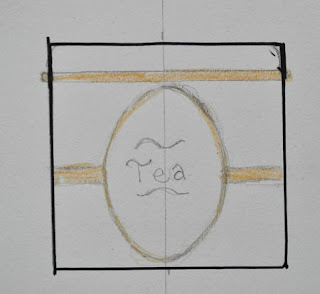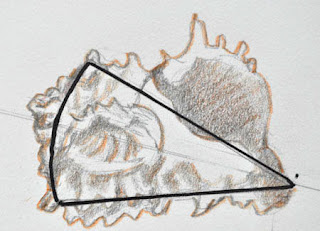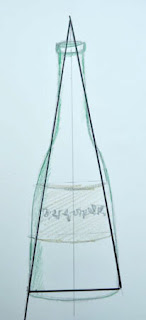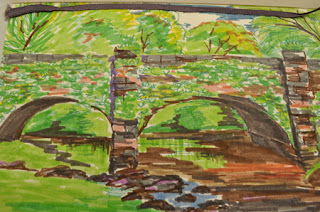
Urban sketching sounds like you would be sketching city landscapes, but it really encompasses more than just high rises and busy streets. Urban sketching is the act of drawing while on location in areas that you live in or are traveling to.
Many artists through the years have practiced some sort of Urban Sketching. Some museums even display sketchbooks, including those by Leonardo DaVinci, Michelangelo, William Turner, John Singer Sargent, and Eugene Delacroix for example.
Sketchbooks often serve a purpose other than for pleasure. Artists would work out ideas for larger works, sometimes doing several sketches of subjects from different angles and with different combinations. Most famous artists carried some sort of sketchbook with them at all times, drawing and making notes. The sketchbook became a type of picture diary.
You can draw in almost any medium. I happen to love using Faber Castell Pitt artist pens, which are like fine-tipped markers and are easy to use, clean and very portable. They come in a huge assortment of colors and are a blast to use.
I love to go to the summer free outdoor concerts and draw the musicians and the audience. I draw quickly and keep it simple with only a few details.
You can sketch at your local farmer’s market, museums, beaches, churches, picnics, parks –you name it, you can sketch it! It’s a great way to document the world you live in.


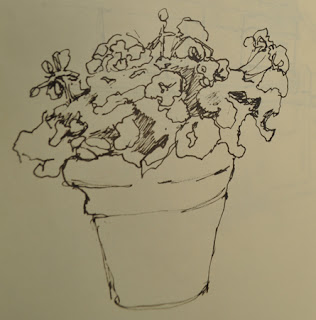
I have a watercolor sketchbook as well. It has a special paper made to absorb liquid. With a small watercolor kit, it’s a great way to do a study or capture a moment in time. And, I just discovered watercolor pencils, which are great fun and are even easier to carry. You can draw the color on the page and then use a water brush to wet the color and blend, just as you would a paint brush.
 It doesn’t matter how good a sketcher you are. The beauty of urban sketching artwork is the informality of it. You can sketch anything, anywhere, and you don’t need to produce a finished design. You will find that your drawing accuracy will improve with practice, and so will the way that you look at things.
It doesn’t matter how good a sketcher you are. The beauty of urban sketching artwork is the informality of it. You can sketch anything, anywhere, and you don’t need to produce a finished design. You will find that your drawing accuracy will improve with practice, and so will the way that you look at things. 
I have several types of sketch pads in a variety of sizes, but mostly I use a soft cover moleskin sketch book, size 5”x 8” for drawing, and a hard cover moleskin, size 5” x 8” made for watercolor. The small size fits into a purse or my carry bag with my box of pens.

A great site that promotes Urban Sketching is Urban Sketchers, “an international nonprofit dedicated to fostering a global community of artists who practice on-location drawing.” The group maintains a network of blogs and online groups where urban sketchers can share their drawings and stories and interact with one another.
Next
I will share some artwork sent to me from several of you. There is some amazing work being done out there.Class Schedules
There's no update on class schedules. For now, you can view my scheduled classes on my website, though things may change as we get closer to fall.Stay safe and be well.
Consider Yourself Challenged!
Tell Me What You'd Like Me to Cover
I hope you enjoyed this session of Urban Sketching. Feel free to share with others.What would you like to see or hear more about? Which of the instructions did you enjoy the most?
Email me: pmeglio99@gmail.com or just hit reply.












